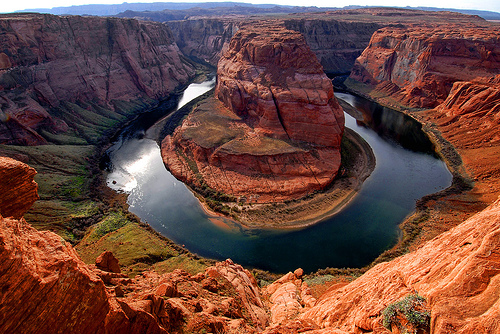In urban environments water plays many roles. It is used for drinking, cooking, washing, gardening, parks, recreation, sanitation, and manufacturing. On coastlines and where rivers cut through cities it serves as a transportation artery.
The Drinking Water Dilemma
In a 1996 published paper the author provided statistics showing that freshwater consumption was 40 times greater than consumption in 1700 and that half of that increase had taken place since 1950. With human population continuing to grow this may mean cities in the Developed and Developing World may find themselves without enough freshwater to sustain their populations.For the cities of the Developing World, growing faster and with less freshwater infrastructure the crisis will be unlike anything we have seen before.
In a 2010 published article in 24/7 Wall Street, the authors listed 10 of the largest American cities most likely to run out of freshwater. In order of most likely to least likely they are:
- Los Angeles
- Houston
- Phoenix
- San Antonio
- San Francisco-Oakland-San Jose
- Fort Worth
- Las Vegas
- Tucson
- Atlanta
- Orlando
Note that these cities occupy the southern areas of the U.S. and many are in the Southwest where migration over the last half century has resulted in increasing water demands for growing populations. Los Angeles long ago ran out of local freshwater and relies heavily on water from the Colorado River basin. Los Angeles receives less than 380 millimeters (15 inches) of rain annually. But its population continues to grow attracting low-income migrants from Mexico and Central America.
Houston, the second city on the list, receives a lot more rain than Los Angeles, 1,400 millimeters (53 inches) annually. This sounds like more than enough to meet population demands. But that’s not the case. Houston is growing rapidly and the withdrawal of water from the local aquifer under the city is causing the land to subside leading to rising sea levels and salinization of freshwater sources.This is a problem for coastal cities in Florida as well.
Many cities on this list are in semi-desert and desert climate zones already water deficient. As these cities continue to grow because of their favourable climate they are depleting all the freshwater sources close by as well as those far away. Like Los Angeles, the cities of Phoenix, Tucson and Las Vegas rely on water from the Colorado River. At their current rates of growth the Colorado River may run dry by the mid-century.

Drought in the Southern U.S. has put other cities at risk. Atlanta, Fort Worth and Orlando have depleted freshwater reservoirs and aquifers through droughts that seem to be longer in duration. Proposed solutions include piping water from wetter areas of the United States and even Canada. This type of solution has led to pushback from local populations at the source who fear that their freshwater resources will be depleted by this growing demand.
For coastal cities like Los Angeles, San Francisco and Houston, desalinization of seawater represents a technological solution that comes at a pretty steep price. Like their Australian urban cousins, most which hug the coastline of that country, desalinization is in their present or near future.
The Freshwater Crisis in the Developing World
In a 1995 study, 31 countries representing almost 500 million population were classified as freshwater stressed or scarce. What is the definition of “stressed” and “scarce?” Hydrologists use the following benchmarks to measure freshwater availability.
- Adequate = greater than 1,700 cubic meters of water per person per year
- Stressed = 1,000 and 1,700 cubic meters
- Scarce = less than 1,000 cubic meters
Most countries of the Northern Hemisphere are classified as Category 1. The exceptions are countries in Central Asia (former republics in the Soviet Union) and regions within very large countries like Russia and the United States (see discussion above on U.S. cities running out of water).
Countries in the Southern Hemisphere more often fit Category 2 and 3. For these countries scarce is becoming more common, and particularly reaching dangerous levels in countries defined as part of the Developing World where migration to cities is continuing to accelerate along with water consumption.
Category 3 has many implications. Freshwater scarcity puts agriculture, the environment, population health and economic growth in jeopardy.
What is even more disturbing is what is forecasted for the Developing World between now and mid-century. By 2025 based on current consumption trends, the number of Category 2 and 3 countries will grow to 50 affecting 3.3 billion people. And by 2050, Category 2 and 3 countries will number 54 and 4 billion people. Almost all affected countries will be in Africa and the Middle East.
In our next blog on the urban landscape we will look at how new urban models, water usage patterns and technology can help avert the growing scarcity of freshwater supply.








